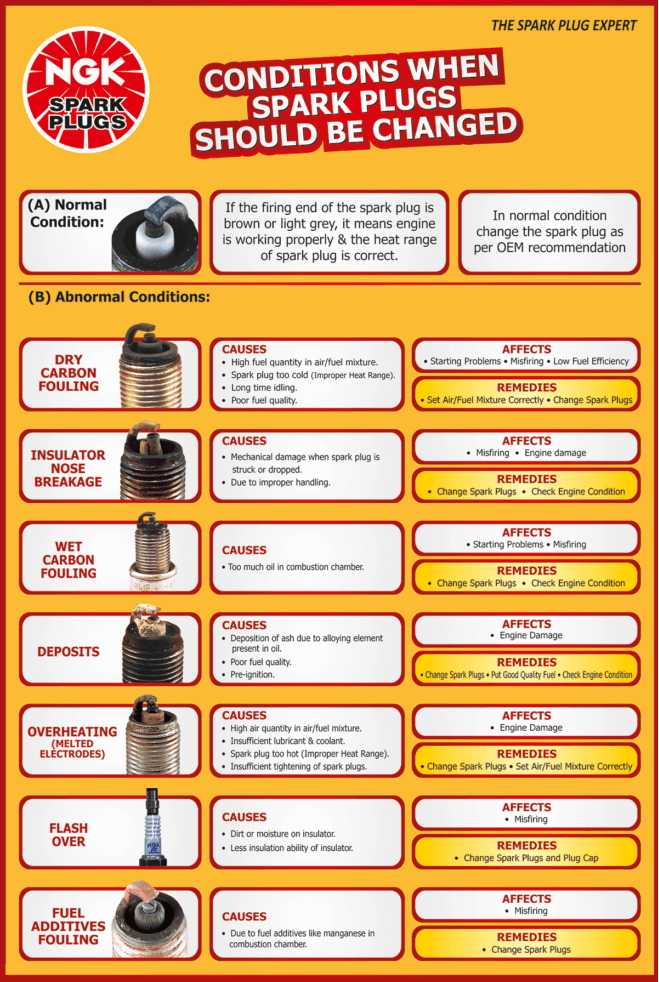Changing spark plugs is a critical part of vehicle maintenance that can significantly impact engine performance, fuel efficiency, and overall vehicle longevity. Knowing when to change spark plugs can save you from expensive repairs and ensure your vehicle runs smoothly. In this article, we will explore the best times to change spark plugs, signs that indicate a change is needed, and tips for maintaining your spark plugs.
Understanding Spark Plugs
Spark plugs are essential components of an internal combustion engine, providing the spark that ignites the air-fuel mixture in the engine’s cylinders. They are designed to withstand extreme conditions, including high temperatures and pressures. Over time, however, spark plugs can wear out, leading to decreased performance and efficiency.
When to Change Spark Plugs
The timing for changing spark plugs can vary based on several factors, including the type of vehicle, driving conditions, and the type of spark plugs used. Here are some general guidelines:
- Manufacturer Recommendations: Always consult your vehicle’s owner’s manual. Most manufacturers provide a recommended interval for changing spark plugs, often ranging from 30,000 to 100,000 miles.
- Type of Spark Plugs: Copper spark plugs typically need to be changed every 30,000 miles, while platinum and iridium spark plugs can last up to 100,000 miles or more.
- Driving Conditions: If you frequently drive in severe conditions (e.g., stop-and-go traffic, extreme temperatures, or towing heavy loads), you may need to change your spark plugs more frequently.
- Engine Performance: If you notice a drop in engine performance, such as misfiring, rough idling, or reduced fuel efficiency, it may be time to check and potentially replace your spark plugs.
Signs That Indicate You Need to Change Spark Plugs
In addition to following manufacturer guidelines, being aware of specific symptoms can help you determine when it’s time to replace your spark plugs. Here are some common signs:
- Engine Misfires: If your engine misfires or has difficulty starting, it could be a sign that the spark plugs are worn out.
- Poor Fuel Economy: A sudden drop in fuel efficiency can indicate that the spark plugs are not igniting the fuel properly.
- Rough Idling: If your vehicle shakes or vibrates while idling, this may be a sign of faulty spark plugs.
- Check Engine Light: If the check engine light comes on, it could be a sign related to spark plug issues. It’s advisable to have your vehicle diagnosed.
- Hard Starting: Difficulty starting your car can indicate that the spark plugs are failing to ignite the fuel mixture effectively.
How to Change Spark Plugs
If you decide to change your spark plugs, here’s a step-by-step guide to help you through the process:
- Gather Tools: You will need a socket wrench, spark plug socket, torque wrench, and possibly a gap tool.
- Disconnect Battery: To ensure safety, disconnect the vehicle’s battery before starting work.
- Remove Old Spark Plugs: Use the spark plug socket to unscrew the old spark plugs. Be careful not to drop any debris into the cylinder.
- Check Spark Plug Gap: Use a gap tool to measure the distance between the spark plug electrodes. Adjust if necessary according to manufacturer specifications.
- Install New Spark Plugs: Screw in the new spark plugs by hand, then tighten them with a torque wrench to the manufacturer’s recommended specifications.
- Reconnect Battery: Once all spark plugs are replaced, reconnect the battery and start the engine to ensure everything is functioning correctly.
Maintenance Tips for Spark Plugs
To prolong the life of your spark plugs and maintain optimal engine performance, consider the following tips:
- Regular Inspections: Check your spark plugs during routine maintenance and replace them as indicated by wear.
- Use Quality Fuel: Using high-quality fuel can help reduce deposits on the spark plugs.
- Avoid Short Trips: Short trips can prevent your engine from reaching optimal temperature, leading to carbon buildup on spark plugs.
- Keep Engine Tuned: Regular engine tuning can help prevent issues that lead to premature spark plug wear.
Changing spark plugs at the right intervals is essential for maintaining engine performance and efficiency. By adhering to manufacturer recommendations, paying attention to signs of wear, and performing regular inspections, you can ensure that your vehicle runs smoothly for years to come. Remember, if you’re unsure about changing spark plugs yourself, it’s always best to consult a professional mechanic.
Regular maintenance of your vehicle, including timely spark plug replacement, can lead to enhanced performance, better fuel economy, and a smoother driving experience.

